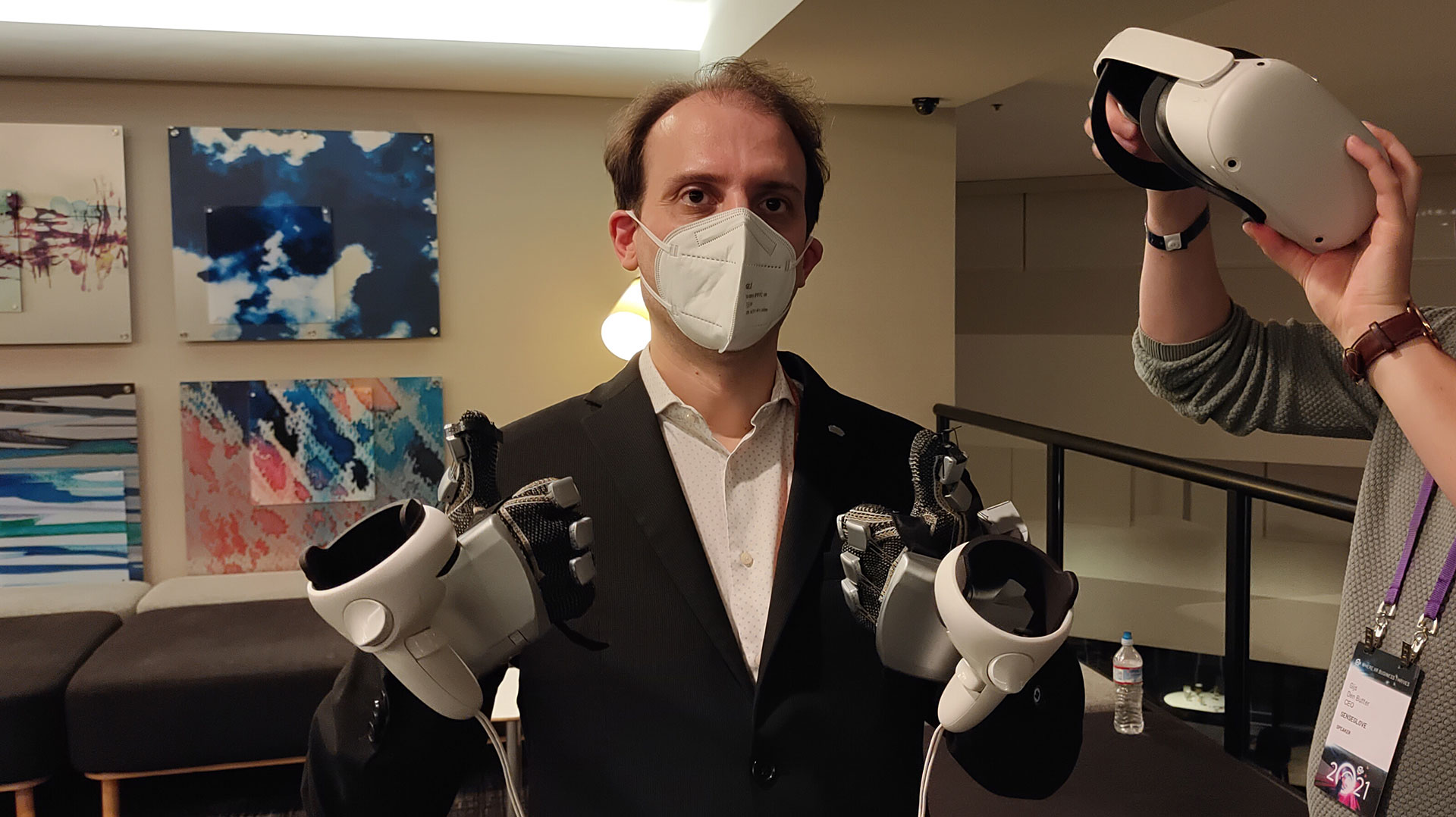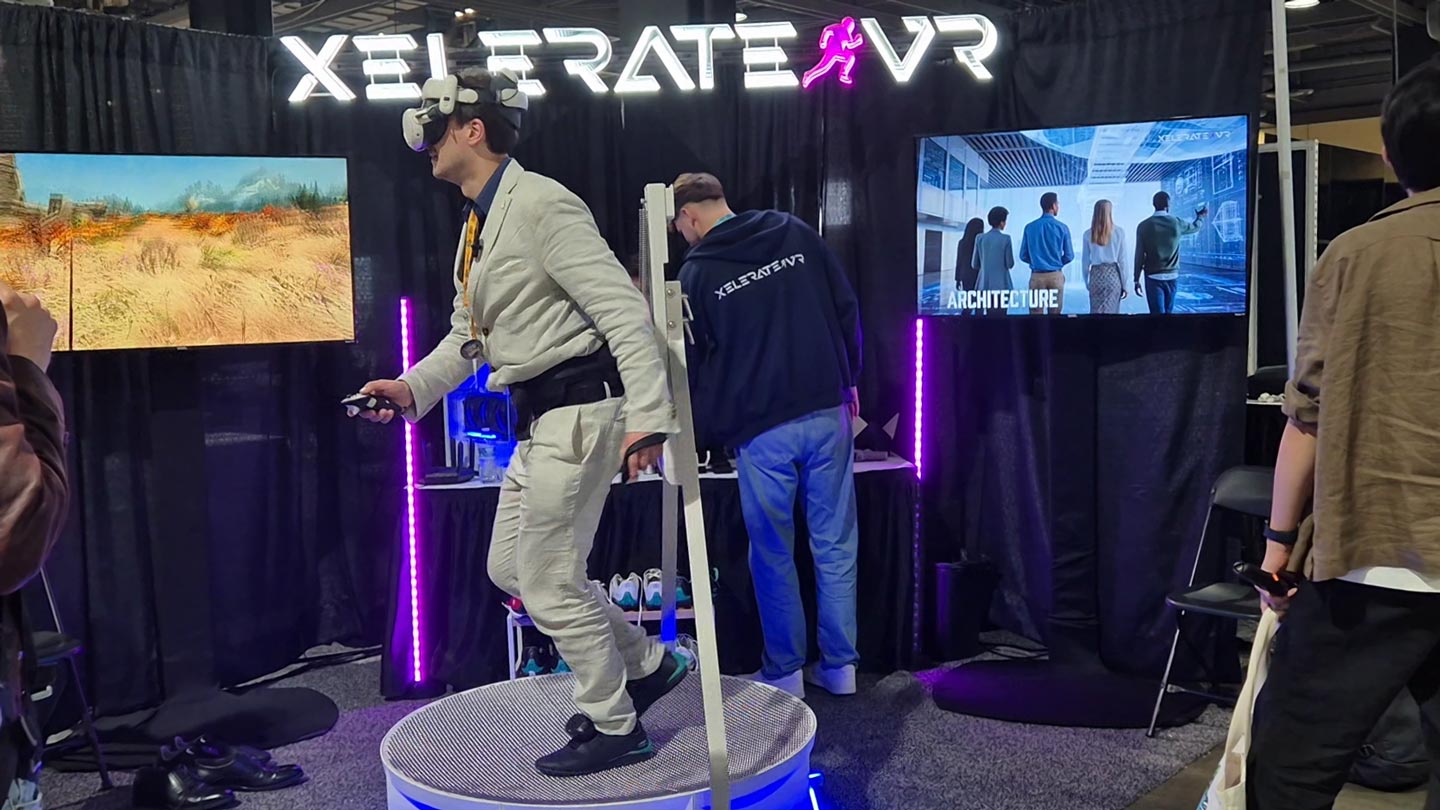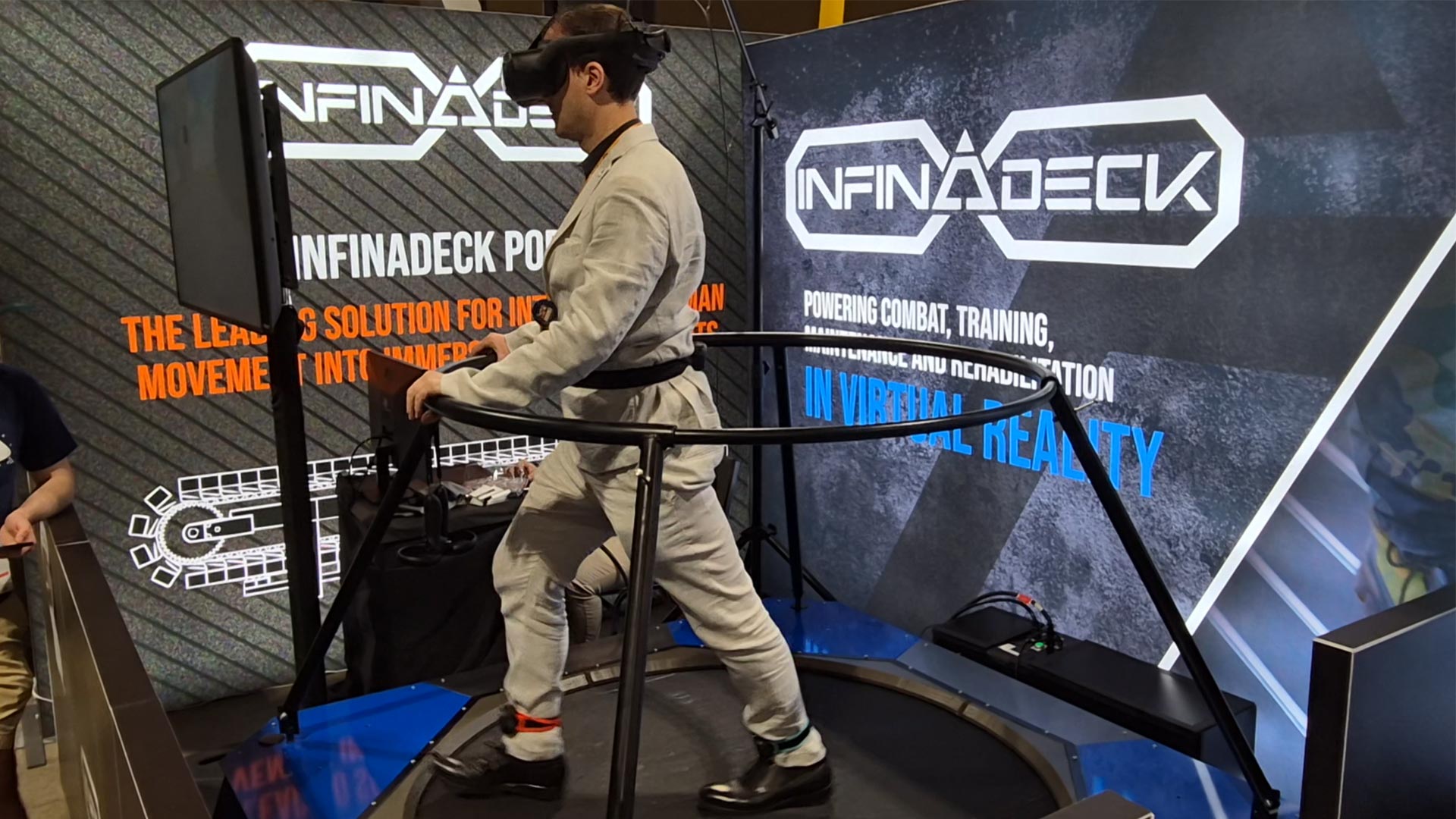Senseglove Nova hands-on: haptic gloves with great comfort
Today I’m writing a post about one of the best haptics devices I have tried at AWE 2021: Senseglove Nova, a pair of gloves for virtual reality.
Senseglove Nova
Senseglove is a Dutch company that has been working for a few years in trying to offer force-feedback gloves that are affordable for companies to buy. Force-feedback means that the glove is able to replicate the forces that should be applied by the virtual objects to your hands if the objects were real: for instance, if you are holding a ball in VR, the force-feedback gloves prevent your real fingers from entering inside the virtual ball, because they replicate the physics force that the surface of the ball would exert on your fingers when you push them towards its surface. Or if in VR you are squeezing a rubber ball, force feedback makes sure that you have more difficulty in closing your fingers, because it simulates the resistance of the ball material. Force feedback is usually exerted by strings or motors that pull the fingertips and prevent you from pushing them further from the current position.
The first version of Senseglove (read my review here) was made of a bulky exoskeleton that looked 3D-printed and required a big box connected to a power outlet to work. The second version, called Nova, is the one that Senseglove is selling now and that has been taken to AWE. The company claims that the gloves have been made easier to wear and work also with standalone headsets like the Oculus Quest 2. The price for these gloves is $5000, which while may seem a lot of money, is much less than what all its competitors are asking for, and is also an affordable amount for companies.
I had the opportunity of testing for some minutes the Nova gloves, to verify if these claims are true. Of course, this can’t be an exhaustive review, given the short provided time, but it is a hands-on that anyway can give you a first glimpse of the potentialities of this device.
Senseglove Nova hands-on
I have to thank all the Senseglove team for having been so kind as to establish a demo station for me in the corridors of the Hyatt hotel next to the AWE Convention center. They assembled it on the fly on a sofa just so that I could give you my feedback. One thing that I truly love about this company is the kindness of its people.
The first thing I noticed is that the new case of the gloves is elegant and contains the gloves and all the required accessories in an ordered way. It’s better than the first case, which was cool, but bigger and a bit less fashionable.
Then I had a first look at the gloves: they have a design that is completely different from the first model, it’s quite unbelievable that they are two consecutive products from the same company. The first Senseglove gloves were bulky exoskeletons, while the new Nova models look like big gloves.


You have a glove made in fabric with on the back of the hand the battery with the force-feedback circuitry and then on top of it a mount to install trackers or controllers to provide positional tracking to the gloves. In the case of Oculus Quest 2, here is where you put the Oculus Touch controllers to track the gloves in VR. For every finger, then, there are three small square plates, connected with a string: this is the mechanism to provide force feedback. Notice that all the fingers are managed by Senseglove with the exception of the pinky.

Wearing the first model was a total pain in the a**, and I had to spend some time to learn how to properly wear them without asking for someone to help me. With the new Nova model… well… you just wear the gloves as you do with whatever glove that you wear in the Winter. Then you have to adjust the final part of the fingers of the gloves so that it fits where there are the fingertips by pushing them a bit, you tighten two little straps, and you are done. The improvement in usability has been dramatic.
The gloves felt pretty good on my hands, only the fabric material was not totally comfortable for me, it felt slightly rough, but I don’t know if it was this way because these demo gloves had been already used a lot of times and so the fabric had ruined over time. The gloves were quite lightweight, and I could move all my fingers without problems. I don’t know what is the effect of using these gloves after hours of usage, but in my short test, they were totally ok to wear and did not cause irritation to my skin, fatigue, arm strain, or other possible issues. So my experience with their ergonomics is positive.
It was also great to see that the gloves were finally wireless, so I could use them everywhere, and without my hands feeling tethered to something. The fact they are working via Bluetooth and operated via a battery is such a great improvement over the first version and makes them much better to be used.
Senseglove people started for me a demo about assembling a robot piece by piece: I had to grab the various parts of the robots (e.g. the arms, the wheels, etc…) and attach them to it, securing them with some screws. It was a nice demo that served the purpose of showcasing the effectiveness of the force feedback mechanism and also of the vibrational haptic feedback it can give to the fingertips.
When grabbing the various parts of the robots, or the tools to assemble them (an electric screwdriver), the force feedback mechanism tried blocking my fingers so that my hand should assume the shape of the virtual object I was holding. This happened thanks to the strings that were installed on the back of my fingers and that were pulled by a motor so that to counteract the push force of my fingers towards the object.
From my tests, force feedback in the Nova works more or less like in the previous Senseglove iteration: the mechanism tries to do its best, but there is still a lot of work to do to make it seem realistic. I mean, it’s cool that the glove tries to block your fingers when you are holding a virtual object, because it increases the immersion, since it is similar to what happens in real life when you are holding a real object. But the reaction of the gloves has a slight lag, plus the position it blocks your fingers at is usually not the correct one for the object you are holding: I mean, if you are holding a planar object, most probably your fingers won’t be totally aligned as it would happen in real life, or maybe they are aligned, but in a position that is wrong and makes you compenetrate the object anyway. As I’ve said, the system tries it best, somewhat works, but most of the times, it doesn’t offer realistic sensations. In my previous review, I told that on the DK1 the positioning of the fingers due to force-feedback worked very well for like 10-20% of times, bad in 30% of times and so-and-so in the remaining ones… I think the statistics are more or less the same… maybe the bad cases now are around 20% and so we have 10% more in the so-and-so stats… but the overall functioning seems similar.
While testing the gloves, I also had the impression that the Nova gloves had less strength than the previous version, and people from the company have confirmed this sensation of mine. They told me that since the previous gloves worked by being connected to the power outlet, while the new ones operate out of a small battery, they could not have the same strength of before. But now the gloves are totally wireless, do not need a complicated setup, and can also work with standalone headsets, so there have been so many advantages that this looked like an acceptable compromise.
Fingers tracking, all provided by the gloves, was usable. It is still not at the level of Ultraleap Gemini, and not even at the one of Oculus Quest tracking, but good enough to be usable. Senseglove told me that they are working on a fingers tracking technology that fuses the data from the gloves with some optical fingers tracking made with the camera of the headset, and this should provide better results. But this will be possible only for headsets that give developers access to camera frames, like the Pico Neo, and not with the other ones, like the Quest. It was also a bit strange that the pinky finger was not considered both for tracking and haptic feedback, because I felt that this omission sometimes broke the magic for me. I think that the future improvements on fingers tracking should lead also to improvements of the force feedback mechanism, because if the engine can detect better where are the fingers in the virtual world, it can also apply force on them in a more realistic way.

I have found the tactile feedback to be a noticeable improvement with regard to the previous version. Senseglove Nova can give you vibrational feedback on your fingertips to make you feel the texture of the object you are touching. This was also available on the first devkit, but this one feels stronger and more nuanced: I’ve found it to be much better. Of course it can’t offer realistic haptic sensations since it is just a vibration, but it is good enough to increase the sense of presence when you are for instance pushing a button in your VR scene and you feel something “touching” the fingertip of your index finger. This sensation plus the force feedback together increase the presence for the user.
I was able to complete the demo in a few minutes: the instructions were easy to follow and the feedback of the gloves helped in giving more realism to my interactions.
Final impressions
Senseglove Nova is an overall big improvement with regard to the previous version of Senseglove gloves. The only worsening is that the force feedback is slightly weaker, but there have been huge improvements in comfort, usability, design, and tactile feedback. Being able to use these gloves wirelessly on a Quest has been very cool and I think that with this iteration they are finally usable by every company. Also the price, $5000, is not that much if they can make a company spare money with a more efficient training.
Of course I have to remind you that haptics in VR are still in early stages, so this product is not perfect: the force feedback emulation still needs a lot of work to appear realistic. But those moments when it works well, or where the vibrations on the fingertips are coherent with what you are touching in VR, it feels a bit magical, and make you understand the potential of this technology, that is the one of increasing the realism of the virtual simulation. The purpose of these gloves is to give a decent haptic feedback for an affordable price, and I think that it has been fulfilled. If you want perfect haptics, instead, you have probably to wait some iterations of these devices to start seeing something meaningful to you.
(As a full disclosure: an employee of Senseglove is a Patron of this blog, but this has nothing to do with this article or the opinion expressed here)
Disclaimer: this blog contains advertisement and affiliate links to sustain itself. If you click on an affiliate link, I'll be very happy because I'll earn a small commission on your purchase. You can find my boring full disclosure here.



